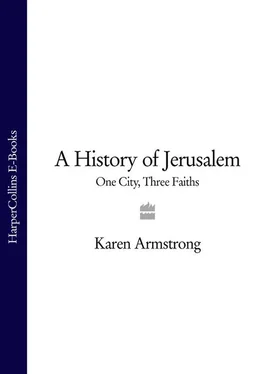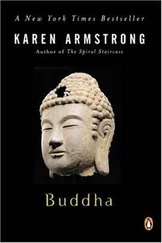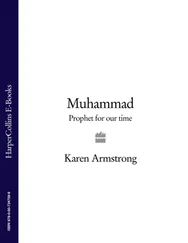Here we should pause to consider the name of the city. It seems to have incorporated the name of the Syrian god Shalem, who was identified with the setting sun or the evening star. Canaan may have been dominated politically by Egypt, but in cultural and religious affairs the chief influence was Syria. In Hazor, Megiddo, and Shechem, temples of this period have been unearthed that have clearly been built on a Syrian model. They are constructed according to the same basic plan as the king’s palace, underlining the fact that all rule was seen to derive from the gods. The laity were forbidden to enter the Hekhal, or cult hall, just as they were denied access to the king’s presence. They could glimpse the god’s effigy, which was placed in a niche at the end of the hall, from the courtyard, through the open doors of the Hekhal. No Bronze Age temple has been unearthed in Jerusalem, but the city’s name shows that the inhabitants were also open to Syrian religion. The names of the Jerusalem princes in the Execration Texts indicate that, like the people of Syria, the Jerusalemites were of Western Semitic origin and shared the same worldview.
The name “Rushalimum” can probably be translated as “Shalem has founded.” 5In the ancient world of the Near East and the Mediterranean, settlement and town-planning were regarded as divine enterprises. The Ophel hill would have appealed to the first colonists because of its water supply and its strategic advantages, but the name of the city shows that the initiative came from the god. At this date, all cities were regarded as holy places, an alien concept for us in the modern West, where the city is often experienced as a godforsaken realm in which religion has an increasingly marginal role. But long before people began to map their world scientifically, they had evolved a sacred geography to define their place in the universe emotionally and spiritually. Mircea Eliade, who pioneered the study of sacred space, pointed out that reverence for a holy place preceded all other speculation about the nature of the world. 6It is to be found in all cultures and was a primordial religious conviction. The belief that some places were sacred, and hence fit for human habitation, was not based on an intellectual investigation or on any metaphysical speculation into the nature of the cosmos. Instead, when men and women contemplated the world about them, they were drawn irresistibly to some localities which they experienced as radically different from all others. This was an experience that was basic to their view of the world, and it went far deeper than the cerebral level of the mind. Even today our scientific rationalism has not been able to replace the old sacred geography entirely. As we shall see, ancient conceptions of holy topography still affect the history of Jerusalem and have been espoused by people who would not normally consider themselves religious. Men and women have formulated this perception of sacred space in different ways over the centuries, but in their discussion of the special status of a city such as Jerusalem certain themes tend to recur, indicating that they speak to some fundamental human need. 7Even those who have no interest in any of the traditionally holy cities and have no belief in the supernatural often have special places to which they like to repair. Such sites are “sacred” to us because they are inextricably bound up with our conception of ourselves; they may be associated with a profound experience that transformed our lives, with memories of early childhood, or with a person who was important to us. When we visit such places, we can perhaps recall the experience of enhanced life that we once had there, an experience which momentarily convinced us that despite the distressing and arbitrary nature of much of our mundane existence, it had some ultimate meaning and value, even if we would find it hard to explain this insight in rational terms.
In the ancient world, just as in traditional societies in our own day, people tried to explain their sacred geography by saying that the world had been created by the gods. It was not, therefore, neutral territory: the landscape had something to say to humanity. When they regarded the cosmos, men and women discerned a level of existence which transcended the frailties and limitations that impeded their own lives. This represented a fuller and more powerful dimension, a reality that was at one and the same time other than they and yet deeply familiar. To express their sense of affinity with the sacred realm, they often personified it, imaging it forth in gods and goddesses with personalities similar to their own. Because they sensed this divine element in the natural world, these deities were also associated with the sun, the wind, or the life-giving rain. People told stories about these deities which were not intended to describe events that had actually happened but were a tentative attempt to express the mystery that they experienced in the world. Above all, men and women wanted to live as closely as possible to this transcendent reality. To say that they sought the meaning of life could be misleading, since the phrase suggests a clear formula that sums up the human condition. In fact, the goal of the religious quest has always been an experience, not a message. We want to feel truly alive and to fulfill the potential of our humanity, living in such a way that we are in tune with the deeper currents of existence. This search for superabundant life—symbolized by the potent, immortal gods—has informed all great religions: people wanted to get beyond the mortality and triviality of mundane experience to find a reality that would complement their human nature. In the ancient world, men and women felt that without the possibility of living in contact with this divine element, life was insupportable. 8
Hence, as Eliade has shown, they would settle only in places where the sacred had once manifested itself, breaking down the barrier that divided the gods from humanity. Perhaps the god Shalem had revealed himself on the Ophel hill and thus made the place peculiarly his own. People could journey there, knowing that it was possible to make contact with the god in the city that he had marked out for himself. But the sacred did not only erupt into the mundane world in apparitions and epiphanies. Anything that stood out from its surroundings and ran counter to the natural order could be a hierophany, a revelation of the divine. A rock or a valley that was particularly beautiful or majestic might indicate the presence of the sacred because it could not easily be fitted into its surroundings. Its very appearance spoke of something else . 9The unknown, the alien, or even the perfect seemed to the men and women of archaic societies to point to something other than themselves. Mountains which towered above the earth were particularly potent symbols of transcendence; by climbing to the summit, worshippers could feel that they had ascended to a different plane, midway between heaven and earth. In Mesopotamia, the great temple-towers known as ziggurats were designed to resemble hills; the seven levels of these huge stone ladders represented the seven heavens. Pilgrims thus imagined themselves climbing through the cosmos and at the top they could meet their gods. 10In Syria, a more mountainous region, there was no need to create artificial hills: real mountains were experienced as sacred places. One which would be very important in the history of Jerusalem would be Mount Zaphon, the present Jebel al-Aqra, twenty miles north of Ugarit at the mouth of the Orontes. 11In Canaan too, Mounts Hermon, Carmel, and Tabor were all revered as holy places. As we know from the Hebrew psalms, Mount Zion to the north of the Ophel hill in Jerusalem was also a sacred site. It is impossible for us to see the mountain’s natural contour, since it has been concealed by the vast platform built by King Herod in the first century BCE to house the Jewish Temple. But in its natural state, Mount Zion may have stood out dramatically from the surrounding hills in such a way that it seemed to embody the sacred “other” and marked the place out as “holy.”
Читать дальше












